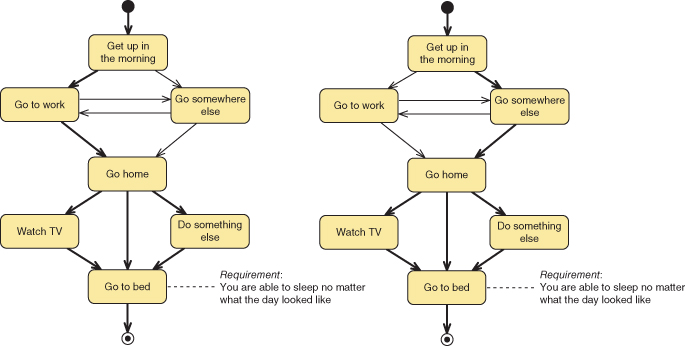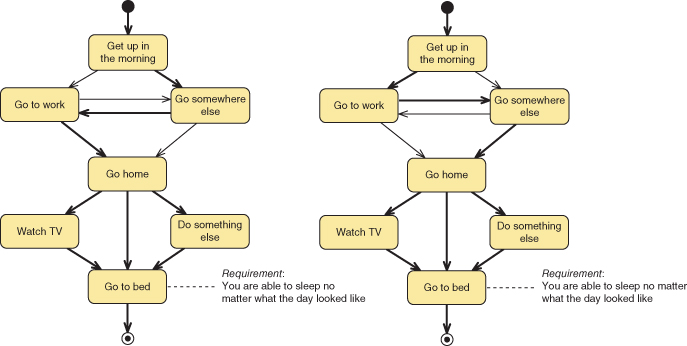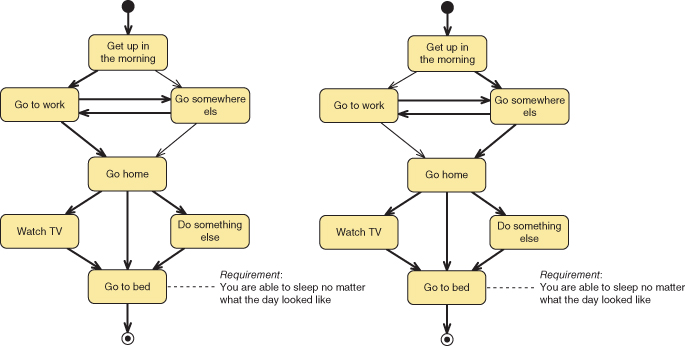A
SOLUTIONS OF EXERCISES
- Exercise 1 Each of the following six figures (Figures A.1–A.3) corresponds to three test cases (indicated by the bold arrows), testing the three possible evening activities. In combination, we obtain 18 test cases.

Figure A.1 Solution of Exercise 1 (test cases 1–6).

Figure A.2 Solution of Exercise 1 (test cases 7–12).

Figure A.3 Solution of Exercise 1 (test cases 13–18).
- Exercise 2 The model described a test of the Microsoft Windows calculator. The test focuses on the basics operators plus (+), minus (−), times (*), divide (/), and equals (=). Trigonometric and logarithmic functions are beyond scope.
- Exercise 3 There is only one transition with trigger “close program,” that is, the one from “Deleted” to “End.” All deleted e-mails are in the recycle bin, which is purged at the end. The MBT model in Figure 2.9 does not describe any other behavior, which is a flaw we would probably detect during a review. To complete the model, we should draw transitions with trigger “close program” and action “empty recycle bin” from the states “Unread,” “Read,” and the subdiagram “Processed” to the end node.
- Exercise 4 The first test objective relates to ...
Get Model-Based Testing Essentials - Guide to the ISTQB Certified Model-Based Tester now with the O’Reilly learning platform.
O’Reilly members experience books, live events, courses curated by job role, and more from O’Reilly and nearly 200 top publishers.

